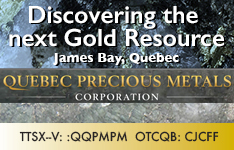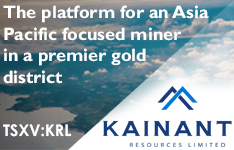Everyone knows by now that the Fed decided not to raise rates at its meeting last week while indicating strongly that further rate hikes lay ahead. Stocks and gold fell, while the dollar rose on the Fed's hawkish statement, as one would expect, but then all reversed once Powell held his press conference with his more measured comments.
The Fed statement accompanying the pause on a rate hike as well as Powell's prepared statement at the beginning of his press conference, was unambiguous and clear: this is a pause in rate hikes with more hikes to come this year.
That view was supported by the "dot plot" released this past week, with the median view showing the Fed funds rate ending the year at 5.6%, 60 basis points above where it is now.
Powell Was Not Dovish, but More Measured
As always, the Q&A at the press conference is the most interesting part of the exercise. My impressions from the Powell press conference, in particular from his unrehearsed answers to questions, were several. First, he is clearly puzzled and frustrated that inflation, particularly the core rate on which the Fed focuses, has not come down more, given the aggressive rate hikes of the past year. He noted that several times analysts, including those at the Fed, had anticipated lower inflation but had been repeatedly proven wrong.
He emphasized that he and the Fed are committed to bringing inflation down to 2% as their top priority. With core PCE — that's the one where no one eats or uses power, the Fed's favorite gauge — running stubbornly at 3.4%, there is still a distance to go before hitting the Fed's 2% target. Powell commented that "there is a long way to go."
In his comments, Powell discussed the speed of rate increases and the level, noting that rates had increased very rapidly over the past year, a primary reason for not increasing again now. The pace of increases and the speed of those increases would slow, he stated, again indicating that further rate increases were ahead.
We have not yet seen the impact of what the Fed has already done. The decision not to raise rates again at this meeting was based on "just how far we have come" (the speed but not the level) and the uncertain lags in monetary policy, recognizing that the full impact of the rate hikes that we have already seen has yet to be experienced. Powell also mentioned credit tightening as an additional reason to postpone further rate hikes, a hint perhaps that the Fed sees fragility in the credit markets.
Another unspoken reason for pausing this time is to maintain the Fed committee's unanimity. There is a growing spread between those who want to continue hiking and those who think enough has been done; pausing now with the prospect of additional hikes was a way to preserve a unanimous vote. The Fed, and Powell, continue to see the economy as strong, with the labor market continuing to be very tight. Indeed, the median estimate of Fed members for economic growth was increased to 1% this year and 1.2% next.
Rates Won't Be Cut This Year, but Fed Sees Lower Rates Next
Powell was at pains to assert that the decision not to raise rates was about the June meeting only and that no decisions had been made about July or future meetings.
The likelihood was for two more rate increases this year, while he also asserted that there would not be rate declines this year. No Fed member sees lower rates by year-end, he said, "and I think that is not at all likely."
Although the median estimate for year-end rates has moved up in recent months, the Fed continues to see rate declines next year and the year after, with a longer-term rate of 2.5%. That would seem to counter Powell's recent mantra of "higher for longer"; even at his press conference, he said it would be "about a couple of years before any cuts," going against his board consensus.
Base Case Is for More Interest Rate Hikes
Unlike many of my friends, whom I admire well, I do not think we have necessarily seen the end of higher rates. Certainly, there could be economic news — unexpectedly lower inflation and higher unemployment — or some financial crisis that would cause the Fed to pause for longer (and a longer pause eventually leading to a permanent one).
But my base case remains to see one or two more 0.25 basis point raises as the Fed's dot pot would indicate and Powell intimated. I don't want anyone thinking for a second that I am a slavish follower of the Fed. I detest the institution, which has done as much damage in its 100-year-plus history as any institution or individual in American history. Nor am I a fan of Powell; he bears responsibility, along with Yellen and Bernanke, for the current plight.
He was far too easy for far too long and waited to start raising rates even as inflation numbers rose, all the time asserting it was only "transitory." But like a reformed drunk, he is a man on a mission, and such men can be dangerous fanatics.
Markets Too Optimistic
As per above, the markets seem to believe that we have seen the end of rate hikes. At the minimum, I would suggest that the markets are not pricing in the possibility of further rate hikes. In some ways, another one or two 0.25% increases would not be fundamental (though every increase incrementally hurts yet more households and companies).
A 25 bps raise on a 5% rate is a very small percentage increase. Moreover, as I continue to emphasize, the economic damage that has already been done by the most aggressive rate hikes in history — the rate of change was more dramatic than even under Volker — has not yet become fully evident. Nothing, except sharp declines in rates — and that is unlikely in the near term — will prevent that damage.
Whether the Fed has already ended rate hikes or there are a couple more to come this year, we are clearly near the end of the rate hiking cycle. There is a very strong probability that the Fed will end rate hikes before inflation is firmly under control and with the economy already heading into a recession. That will be extremely bullish for gold, less so for stocks.
I discuss much of this in an interview with the excellent David Lin, conducted
the day after the Fed announcement.
The Economy Is Already Sliding Into a Recession
The markets are essentially saying that all is OK, but it is not. All important indicators, including the Leading Economic Index and the inverted yield curve, are forecasting a recession.
The yield curve is more inverted than it was ahead of the last four recessions and, indeed, is the most inverted since at least the early 1960s. This indicator has a strong predictive value but normally works with a long lag.
Important economic factors, including jobs and retail sales, are also turning. True, the unemployment rate, though ticking up, remains low, and new job growth is also strong (notwithstanding the factors I discussed in Bulletin #866). But significantly, as more people slowly return to the labor market, partly as the covid-era stimulus programs come to an end, the unemployment rate starts to move up.
Also, while new job numbers remain high, initial claims for unemployment are also moving up dramatically, as shown in the graph. They hit bottom just shy of a year ago, at a little over 180,000. They have trended up over the past year until jumping in the last few weekly reports to over 260,000 last week. Other than during covid, this is the highest since the Great Financial Crisis.
How Long Can the Indebted Consumer Continue To Spend?
Retail sales, after holding up, have now started to slow. For May, the government is estimating retail sales up 1.6% from a year ago. That does not sound awful until you factor in that prices have moved up anywhere from 8% or so upwards. So the clear conclusion is that consumers are not buying the same quantity and quality of goods that they were a year ago. As always, the media, including some who should know better, focus only on the headline: says Market Watch, "Retail Sales Rise Again, Pointing to Resilience of U.S. Economy."
As discussed before, savings are down, and credit card balances are up, indicating that retail spending cannot continue at this pace for long. There are many more damaging factors, including the government debt. The measure to raise the debt ceiling promises, in James Grant's words, "insignificant, reversible steps to check the cascading growth" in spending and debt.
The ink is hardly dry, and already President Biden is trying to work around the agreement not to cancel student debt, while Senate Leader Schumer is suggesting that additional aid to Ukraine, as well as spending for "domestic priorities," will be outside the spending limits. Within a few months, the spending limits, meager as they were, will be a dead duck.
We won't discuss global economies much in this Bulletin. Suffice to say that in Europe, although the EU economy has moved into recession even as inflation is over 6%, the European Central Bank continues to raise rates, now at 3.5%, and promised another hike next month.
Stocks, Already Expensive, May Get More So as Earnings Fall
Stocks are vulnerable. The S&P is trading at 19.99 times forward earnings, while earnings estimates are unrealistically high. Analyst consensus estimates are looking for less than a 1.5% decline in S&P earnings over the next 12 months. With the economy weakening and consumer spending beginning to drop while inflation remains stubborn, that is a very unrealistic projection, in my view.
Now, the earnings multiple has come down since the covid years — when earnings drop precipitously, faster than stock prices, then the p/e multiple goes up — but other than that, this is the highest p/e multiple since 2003. High valuations do not tell you that a market will decline, far less when it will do so, but they do indicate the risk in the market, and right now, that risk is high.
The lack of Treasury funding over the past six months helped the equity markets. Equally, the $2 trillion in funding expected for the rest of this year, withdrawing liquidity, will be a weight on the market.
Gold Faces Two Immediate Headwinds
Gold has been holding up far better than gold stocks, and that is logical. If individuals and institutions have been turning to gold for protection and as a hedge, it makes sense that they turn, initially, at any rate, to physical gold rather than gold miners. Gold is vulnerable in the near term, both from a possible change in sentiment toward more rate hikes as well as the Treasury's massive bond issuance program (even as there is ongoing strong physical buying).
Once those two factors are behind us, however, and once it is clear that the Fed has ended its rate-hiking cycle without killing inflation, then gold will move up strongly. With the Fed pausing even as the EU, U.K., Canada, and Australia continue to raise rates, the rate of change moves against the U.S. dollar and, therefore, will help gold.
The metal is also helped by the new stimulus measures in China, which is frustrated by the lack of a strong growth rebound coming out of the most recent lockdown.
Gold Stocks Are at Long-Term Valuation Lows
Once it is clear that gold has bottomed and it stays firmly and consistently above the psychologically important US$2,000 level, then interest will return to the gold stocks. The miners have the lowest valuations since 2018, and on many metrics, close to their lowest valuations in 20 years.
Continuing to accumulate at these levels across the spectrum — the large royalty companies, the best of the large miners, and cashed-up exploration companies — will reap strong rewards in a year or two. In short, then, we believe there is still the likelihood of at least one more rate hike while the economy is inevitably moving toward recession.
The Fed will stop raising rates before inflation is crushed, leaving us with high rates, a recession, and inflation, a triumvirate that will hurt stocks but boost gold significantly.
Another Good Deal for Osisko, Reinforcing Its Growth Profile
Osisko Gold Royalties Ltd. (OR:TSX; OR:NYSE) is finally closing its protracted CSA transaction, giving it exposure to both silver and copper. It is a complicated transaction, an investment into Metals Acquisition Corp. (MAC) to help with their acquisition of the CSA Copper Mine in Australia, with many hurdles, options, and changing royalty rates.
Osisko had originally announced it would acquire a silver stream more than a year ago. MAC exercised its option to sell Osisko a copper stream as well — which we regard as a positive–for a total of US$190 million payment on closing. The mine is currently expected to end production in 2029, but the new owners are expected to come out with a plan to extend that mine life, though at lower levels of production.
Looking at the streams separately, analysts give a better-than-8 % Internal Rate of Return to the silver and over 11% to the copper. Osisko will receive all of the payable silver by-products for ongoing payments of 4% of the spot price. The copper streams start (after a year) at 3% of payable copper, going up to 4.875% and then down to 2.25% after hurdles for the rest of the mine life; the payment is also 4% of the copper price.
This is a high-quality, long-life mine in a top jurisdiction, with, notwithstanding some operator risk, high potential for expansion. This is another good asset for Osisko, diversifying its product base and geographic exposure with meaningful growth potential.
After an 11% drop from its early-May high, which is in line with that of the sector, Osisko is a Buy again.
Midland Executes Another Great Deal With Top Partner
Midland Exploration Inc. (MD:TSX.V) continues its string of deals with senior mining companies, with Rio Tinto optioning an interest in several properties in James Bay, Quebec, deemed prospective for lithium. The option is valued at up to US$65 million in expenditures and payments. Ten properties are included in the option package, including parts of the large Mythril property.
In recent early-stage exploration work, Midland has identified several targets for lithium. Although the properties have been selected for their lithium potential, and this is the focus of Rio's interest, the option would include any metals or other resources discovered. Under the terms of the agreement, Rio can acquire an initial 50% interest in the properties over five years by making cash payments of US$1 million to Midland (half at closing the other half over the term) and undertaking exploration expenditures of US$14.5 million, including a commitment of at least US$2 million the first 18 months.
After acquiring its initial 50% interest, Rio will have the option over the next five years to earn 70% with exploration expenditures of an additional US$50 million. Rio, unusually for Midland, will be the operator. We see this as a positive since Rio has expertise in lithium. Given Rio's interest in lithium and the world's demand for the metal, this is a rich option agreement and a huge win for Midland.
The deal is added to another option with Rio, looking for copper and nickel on its Tȇte Nord property, as well as other agreements with BHP, Barrick, Agnico, and others. Although the stock responded to the announcement, up 10 cents on top of a previous bounce off the 50-cent low, it remains good value: strong technical and market management, a solid balance sheet, with multiple options and alliances, Midland is a buy.
Midland's agreement with Rio starts when Rio is able to get to the properties
after the Quebec wildfires subside. Several companies are affected by these fires,
most notably Agnico as well as Osisko, in addition to Midland. Any production
and revenue shortfalls will be temporary.
Royal Makes Another Acquisition
Royal Gold Inc. (RGLD:NASDAQ; RGL:TSX) has acquired three new producing royalties on two mines in Brazil from ACG, a London company. The first royalty is for gold from Serrote; the second for gold, platinum, and palladium from Santa Rita; and the third a copper/nickel royalty on both. The total cash consideration is US$250 million, part of a financing package for ACG's acquisition of both mines.
The net asset value of the royalties on current reserves is not far off the purchase price, so Royal gets any expansion and exploration upside free. The royalties amount to a little more than 5% of Royal's operating NAV. Royal has the balance sheet to complete the acquisition, with half a billion available on its credit facility in addition to US$134 million in working capital; that's after repaying US$100 million on its facility earlier this month.
The stock is down about 18% from its late April highs, a larger move than many gold equities following the news that Newmont is suspending operations at its Peñasquito mine in Mexico in response to strike action; that mines contribute a little more than 7% of the company's revenues. (Wheaton also has a royalty on the mine. See below.)
Stock Is at Good Levels
On many metrics, Royal is trading below the valuations of its two senior peers. Its balance sheet is not quite as strong, but certainly solid. The company has recently paid up for several large-scale, long-term royalties on current and future production (including Royal Gold).
Cortez and Great Bear), which has also affected the company's stock price on concerns it is overpaying.
However, given its valuation, growth profile, and stock price, it is a Buy at this level.
Wheaton Makes a Couple of New Stream Acquisitions
Wheaton Precious Metals Corp. (WPM:TSX; WPM:NYSE) has made a couple of additional stream purchases, the news offset by the suspension of Peñasquito (see above under Royal Gold). It increased its stream on the Blackwater Mine currently under development for an additional US$40 million in committed funding, with the first US$32 million of a total of US$180 million being paid earlier this month; and last month, it added a US$300 million gold stream on Lundin's Cangrejos project in Ecuador.
Both of these transactions continue Wheaton's recent trend of mid-sized and smaller investments in longer-term development projects.
Though not particularly undervalued, Wheaton is high quality, with a strong balance sheet and exposure to multiple long-lived projects. If you do not own it, it can be bought here.
Is Barrick Looking To Buy More Copper?
Barrick Gold Corp. (ABX:TSX; GOLD:NYSE) has made informal approaches to acquire First Quantum, the global copper miner, but has been rebuffed, according to an article in The Wall Street Journal. Neither company has commented on the story. Barrick has made no secret of wanting to increase its copper exposure, but CEO Mark Bristow is averse to paying high premiums.
It seems probable that Barrick has missed out on several recent acquisitions because of this, and equally unlikely that First Quantum would agree to be acquired without a meaningful premium.
Certainly, Barrick is comfortable in Africa; and has the balance sheet for a large acquisition, but First Quantum is no longer a troubled company; now the Panama stand-off has been resolved. Perhaps more than anything, the story simply emphasizes the importance of copper including to gold mining companies.
Barrick, down 18% from its early May peak, is a Buy.
Nova Continues Acquisitions, Even Though Likely To Be Acquired
Nova Royalty Corp. (NOVR:TSX.V) closed its acquisition of an additional royalty on Hudbay's Copper World project (see Bulletin #865). Although the company has made no comment, we hear from other sources that there has been widespread interest from numerous parties, both royalty companies and others, in acquiring Nova (see also Bulletin #865), though without any indication of price.
Although there are various options being looked at, including bringing in new management (with one respected team reportedly looking at it), the most likely outcome, in my view, would be a sale of the company, assuming bids are sufficiently strong.
In any event, the stock price meaningfully undervalues the assets; Nova is a Buy.
Nestlé Looking For Sustainable Farm Products
Nestle SA (NESN:VX; NSRGY:OTC) has recently taken two steps toward helping farmers around the world adopt more sustainable farming practices. First, it has inaugurated its Institute of Agricultural Sciences to develop science-based solutions. Nestle has direct relationships with thousands of farmers around the world, and the new institute is intended to research and develop new ways of moving toward more sustainable farming methods.
Separately, it published its initial Plan 2030 Progress Report, showing that farmers are gradually adopting regenerative practices and improving yields. The assessment focuses on coffee farmers.
Adopted practices include intercropping, mulching, and improved weed management, as well as the planting of trees to provide shade to coffee plants. In all, Nestlé says, its training programs have reached over 100,000 farmers in 14 countries. Nestlé has also been developing various plant-based coffee alternatives, including peas, oats, and fava, as well as coconut launches in certain markets.
A Rare Buying Opportunity for Nestlé
These are examples of the effort Nestlé is putting into improving farming around the world from which it sources its products. Nestlé is a global blue chip, a core holding for us. It is seeing growth in all product sectors and geographical areas and has been able to maintain most of its margin, despite high inflation on its cost inputs and transportation. (See Bulletin #861.
Currently, it is trading at a forward p/e of 22 and yields 2.7%. The stocks rarely reach truly undervalued levels other than in a market crash. Now it is trading near the top of its dividend yield range, at its high since 2016. It has increased its dividend each year since 1996 when it kept it flat. Down over 7% since early May, Nestlé can be bought here as a long-term, (almost) buy-and-forget holding.
TOP BUYS THIS WEEK, in addition to those above, include Altius Minerals Corp. (ALS:TSX.V), Hutchison Port Holdings Trust (HPHT:Singapore), Orogen Royalties Inc. (OGN:TSX.V),Fortuna Silver Mines Inc. (FSM:NYSE; FVI:TSX; FVI:BVL; F4S:FSE),Pan American Silver Corp. (PAAS:TSX; PAAS:NASDAQ), and Agnico Eagle Mines Ltd. (AEM:TSX; AEM:NYSE).
UPCOMING APPEARANCES I'll be taking part in a MoneyShow Virtual Expo, June 27-29, with a talk on gold. Then in July are two live events. First up is FreedomFest, July 12-15, this year in Memphis, Tenn. I will be on panels on international investing and another on gold. And next is the ever-popular Rule Symposium, a top conference for resource investors with William Bonner (via video), Robert Friedland, Robert Quartermain, and many more; Osisko's Sandeep Singh and Wheaton's Randy Smallwood (from companies discussed above) will also be there, July 23-27 in Boca Raton, Fla.
CAUSE OF INFLATION? Canadian Mark Carney, Governor of the Bank of England from 2013 to 2020, now says that high inflation in Britain is all due to Brexit. He neglects that there is high inflation in other countries, presumably not caused by Brexit. He also ignores that the one thing in common across all countries with high inflation is the excessive money printing that preceded it, but strangely central bank officials do not like to discuss that.
Sign up for our FREE newsletter
Important Disclosures:
- As of the date of this article, officers and/or employees of Streetwise Reports LLC (including members of their household) own securities of Osisko Gold Royalties Ltd., Midland Exploration Inc., Barrick Gold Corp.,Nova Royalty Corp., Altius Minerals Corp., Orogen Royalties Inc., Fortuna Silver Mines Inc., Pan American Silver Corp., Agnico Eagle Mines Ltd., and Wheaton Precious Metals Corp.
- Adrian Day: I, or members of my immediate household or family, own securities of: All. My company has a financial relationship with: All. I determined which companies would be included in this article based on my research and understanding of the sector.
- Statements and opinions expressed are the opinions of the author and not of Streetwise Reports or its officers. The author is wholly responsible for the validity of the statements. The author was not paid by Streetwise Reports for this article. Streetwise Reports was not paid by the author to publish or syndicate this article. Streetwise Reports requires contributing authors to disclose any shareholdings in, or economic relationships with, companies that they write about. Streetwise Reports relies upon the authors to accurately provide this information and Streetwise Reports has no means of verifying its accuracy.
- This article does not constitute investment advice. Each reader is encouraged to consult with his or her individual financial professional. By opening this page, each reader accepts and agrees to Streetwise Reports' terms of use and full legal disclaimer. This article is not a solicitation for investment. Streetwise Reports does not render general or specific investment advice and the information on Streetwise Reports should not be considered a recommendation to buy or sell any security. Streetwise Reports does not endorse or recommend the business, products, services or securities of any company.
For additional disclosures, please click here.
Adrian Day Disclosures
Adrian Day’s Global Analyst is distributed for $990 per year by Investment Consultants International, Ltd., P.O. Box 6644, Annapolis, MD 21401. (410) 224-8885. www.AdrianDayGlobalAnalyst.com. Publisher: Adrian Day. Owner: Investment Consultants International, Ltd. Staff may have positions in securities discussed herein. Adrian Day is also President of Global Strategic Management (GSM), a registered investment advisor, and a separate company from this service. In his capacity as GSM president, Adrian Day may be buying or selling for clients securities recommended herein concurrently, before or after recommendations herein, and may be acting for clients in a manner contrary to recommendations herein. This is not a solicitation for GSM. Views herein are the editor’s opinion and not fact. All information is believed to be correct, but its accuracy cannot be guaranteed. The owner and editor are not responsible for errors and omissions. © 2023. Adrian Day’s Global Analyst. Information and advice herein are intended purely for the subscriber’s own account. Under no circumstances may any part of a Global Analyst e-mail be copied or distributed without prior written permission of the editor. Given the nature of this service, we will pursue any violations aggressively.















































